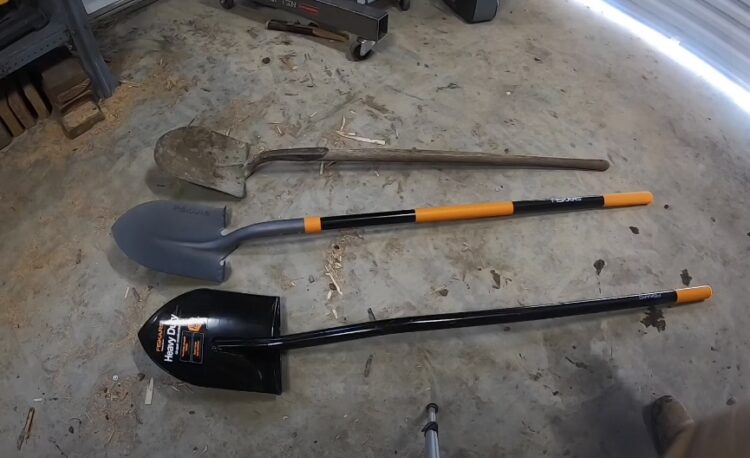When you’re looking to spruce up your yard, the question of “how deep should rock be for landscaping?” often surfaces as a crucial consideration. The depth of rock in landscaping not only affects the aesthetic appeal but also the practical functionality of your outdoor space. Whether you are laying a path, creating a decorative feature, or installing a rock garden, the depth of your landscaping rock can make or break the success of your project.
Understanding the Role of Depth in Landscaping
Before diving into the depths, it’s essential to understand why “how deep should rock be for landscaping” is such an important question. The depth of your rock can impact:
- Weed Suppression: A sufficient depth of rock can prevent weeds from reaching the surface;
- Moisture Retention: Rocks can help retain moisture in the soil when used as a mulch;
- Erosion Control: Proper depth helps prevent soil erosion by anchoring the soil underneath;
- Aesthetic Consistency: An even depth of rock can ensure a consistent, polished look.
The Ideal Depth for Different Landscaping Rocks
The recommended depth of landscaping rock varies depending on the type of rock and its intended purpose. Here’s a quick guide to help you decide:
Pea Gravel
Pea gravel is a small, rounded rock often used for pathways, driveways, and as ground cover. The ideal depth for pea gravel depends on its intended use:
- Pathways and Walkways: 1.5 to 2 inches of pea gravel is recommended. This depth allows for a comfortable walking surface while preventing the rocks from shifting too much;
- Driveways: For light to moderate vehicle traffic, you should aim for a depth of 2 to 2.5 inches. For heavy vehicle use, a depth of 3 to 4 inches may be more suitable;
- Ground Cover: When using pea gravel as ground cover, a depth of 2 inches is typically sufficient. This helps suppress weeds while allowing for adequate drainage.
River Rock
River rocks come in various sizes and shapes, making them versatile for landscaping. The ideal depth for river rock depends on the size of the rocks and their intended purpose:
- Pathways and Borders: For small to medium-sized river rocks, a depth of 2 to 3 inches is recommended. This depth ensures stability and a pleasing appearance;
- Decorative Features: When using river rocks around water features or in decorative areas, a depth of 3 to 4 inches may be preferred for added visual impact.
Lava Rock
Lava rock is a lightweight and porous option often chosen for its unique texture. The ideal depth for lava rock varies based on its purpose:
- Mulch Replacement: When using lava rock as a mulch alternative, a depth of 1 to 1.5 inches is typically sufficient. This depth helps retain moisture and control weeds;
- Decorative Beds: For decorative beds and borders, you can go up to 2 inches in depth for a striking visual contrast.
Crushed Stone
Crushed stone is a versatile material available in various sizes and colors. The ideal depth for crushed stone depends on its intended use:
- Driveways: For driveways, a depth of 2 to 4 inches is recommended, depending on the type of vehicle traffic. Heavy vehicles may require a deeper layer for stability;
- Garden Paths: A depth of 2 to 3 inches is suitable for garden paths, providing a stable surface for walking.
Marble Chips
Marble chips are known for their elegance and brightness. The ideal depth for marble chips depends on the application:
- Ground Cover: When using marble chips as ground cover, a depth of 1 to 2 inches is ideal. This depth allows for effective weed suppression and showcases the stone’s beauty.
Boulders
Boulders are substantial rocks that can serve as focal points or natural elements in your landscape design. The ideal depth for boulders is highly dependent on their size and the desired effect. Generally:
- Decorative Use: Boulders placed for decorative purposes can be partially buried or set on the surface. The depth will depend on your aesthetic goals, but it’s essential to ensure stability and safety;
- Retaining Walls: When using boulders for retaining walls, consult a professional to determine the appropriate depth and placement to support the intended structure.
Determining How Deep Should Rock Be for Landscaping

To achieve the perfect rock depth for your landscaping, follow these steps:
| Step | Description |
| Define the Purpose | The function of the rock area will influence depth. For paths or driveways, a deeper layer will be needed for stability, while decorative areas might need less. |
| Select the Right Type of Rock | Each type of rock has its optimal depth for functionality and appearance. |
| Calculate the Area | Measure the length and width of the area you wish to cover to determine how much rock you’ll need. |
| Factor in the Rock Size | Larger rocks generally require a greater depth than smaller ones to maintain an even surface. |
| Consider the Underlayment | Landscape fabric or plastic sheeting can affect how deep your rock should be laid. |
The Layering Method
To ascertain “how deep should rock be for landscaping,” it’s also useful to think in terms of layers:
Base Layer
The base layer serves as the foundation for your rock landscape. It plays a vital role in providing stability and drainage. Here are some key points about the base layer:
- Depth: The base layer should be approximately 3 to 4 inches deep. This depth helps in preventing weeds from growing through the rocks and promotes proper water drainage;
- Material: Use larger crushed stones or gravel for the base layer. These stones provide excellent drainage and stability.
Main Layer
The main layer constitutes the bulk of your rock landscape and is the most visible part. It should be deep enough to cover the base layer entirely and create the desired aesthetic. Here are some considerations for the main layer:
- Depth: The depth of the main layer depends on your aesthetic preferences and the size of the rocks. Typically, it should be deep enough to completely cover the base layer, ranging from 2 to 4 inches deep;
- Material: Choose rocks of various sizes and shapes for the main layer to create visual interest and texture. Bigger rocks can serve as focal points, while smaller ones fill in the gaps.
Top Layer
The top layer is the final touch that adds finesse to your rock landscaping. It can consist of finer materials or be the same as the main layer. Here are some details about the top layer:
- Depth: The depth of the top layer is typically around 1 to 2 inches. It’s shallow compared to the base and main layers but provides a finishing touch to the overall design;
- Material: For the top layer, consider using crushed stone, pea gravel, or a finer type of decorative rock. This layer enhances the visual appeal of your landscaping project.
Tips for Achieving the Ideal Rock Depth

To ensure that your rock landscaping project is successful and maintains the ideal rock depth over time, consider the following tips:
- Compact the Base: Before adding any rocks, it’s essential to ensure that the base layer’s soil is properly compacted. This step provides a stable foundation for the rest of the layers;
- Use Edging: To keep your rocks in place and maintain the desired depth, use edging materials such as metal, stone, or wood. Edging prevents rocks from spreading or shifting;
- Check for Settling: After a few weeks or months, rocks may settle due to natural settling processes or environmental factors. Regularly inspect your rock landscape and add more rocks as needed to maintain the ideal depth;
- Mind the Plants: If you plan to incorporate plants into your rock landscaping, ensure that the depth of the rocks does not smother the plants’ roots. Leave sufficient space and consider using landscape fabric to protect the plants.
Conclusion
As we’ve explored, determining how deep should rock be for landscaping is not just a matter of taste but of horticultural and structural importance. A garden adorned with the right depth of rock can be both a visual pleasure and a practical space. Remember, the key lies in the balance—too shallow, and you lose functionality; too deep, and you could impact the health of your plants and your pocketbook. Always factor in the type of rock, its purpose, and the conditions of your outdoor space to ensure that your landscaping dreams stand on solid ground.
FAQs
How deep should rock be for landscaping to prevent weeds?
For effective weed suppression, a depth of 2 to 4 inches is often recommended. This can vary depending on the rock size and type.
What is the minimum depth for landscaping rocks?
The minimum depth can be as little as 1 inch for fine gravel or decorative purposes. However, for most applications, a 2-inch minimum is advisable.
Can the depth of rock affect soil moisture?
Yes, too much rock can hinder water from reaching the soil, while too little won’t retain enough moisture. The right balance is key.
How deep should rock be for landscaping around plants?
Around plants, 2 to 3 inches is generally sufficient. Be careful not to pile rocks against plant stems or trunks, as this can cause rot.
Is there a different recommended depth for landscaping rock if I’m using a fabric underlayment?
The depth might be slightly less if you’re using a fabric underlayment, as it adds an extra layer of weed protection.

